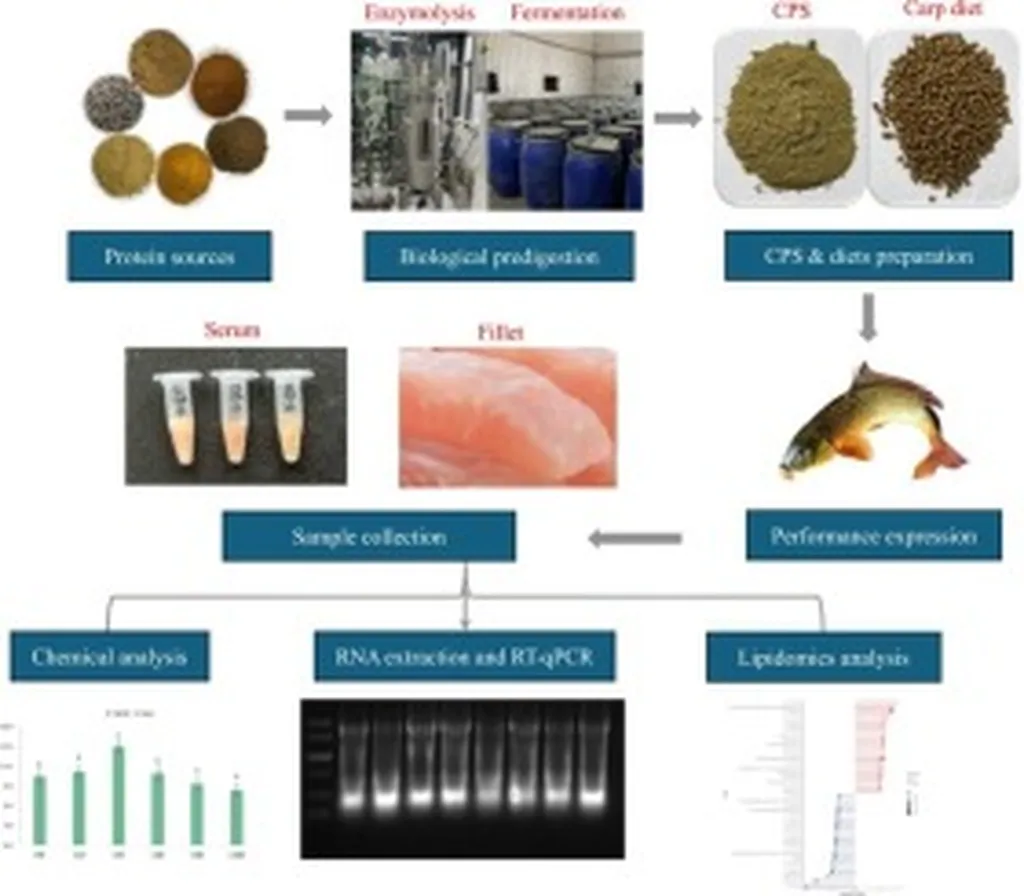In the quest for sustainable aquaculture, researchers are turning to alternative protein sources to replace the increasingly scarce and expensive fishmeal. A recent study published in the *International Journal of Applied and Experimental Biology* (translated as the *Journal of Practical and Experimental Biology*) sheds light on the potential of soybean meal (SBM) as a viable alternative, offering promising insights for the aquaculture industry.
Led by Areeha Fatima from the Fish Microbiology and Immunology Lab at the University of Agriculture in Faisalabad, Pakistan, the study focused on the growth and hematological parameters of two popular carp species: rohu (Labeo rohita) and grass carp (Ctenopharyngodon idella). With the global demand for fishmeal outstripping supply, the search for cost-effective and sustainable alternatives has become a priority for aquaculture professionals.
The research, conducted over seven weeks, compared the performance of fish fed with traditional fishmeal against those fed with soybean meal. The results were encouraging, particularly for rohu. “We observed significant improvements in weight gain and specific growth rate (SGR) in rohu fed with soybean meal compared to the control group,” Fatima explained. “This suggests that soybean meal can be a highly effective alternative protein source for this species.”
For grass carp, the results were less conclusive. While there was no significant difference in weight gain and SGR between the two groups, the study did note a notable increase in white blood cell count and lymphocytes in the SBM-fed group. This could indicate enhanced immune response, a critical factor for fish health and disease resistance.
The hematological data further underscored the potential of soybean meal. In rohu, SBM-fed fish showed higher red blood cells, hemoglobin, hematocrit, and white blood cells, suggesting improved overall health. For grass carp, while red blood cells, hemoglobin, and hematocrit values declined, the increase in white blood cells and lymphocytes pointed to a robust immune response.
The commercial implications of these findings are substantial. As the cost of fishmeal continues to rise, the aquaculture industry is under pressure to find affordable and sustainable alternatives. Soybean meal, a byproduct of soybean oil production, is abundant and cost-effective, making it an attractive option for aquafeed manufacturers.
“This study provides a strong foundation for further research into the use of soybean meal in aquafeed,” Fatima noted. “It opens up the possibility of incorporating varying percentages of SBM in carp feed, which could significantly reduce costs and improve the sustainability of aquaculture practices.”
The study’s findings are particularly relevant for the energy sector, as aquaculture is increasingly seen as a sustainable source of protein that can help meet the growing global demand for food. By reducing reliance on fishmeal, the industry can lower its environmental impact and improve its economic viability.
As the aquaculture industry continues to evolve, research like this will play a crucial role in shaping its future. The shift towards alternative protein sources is not just about cost savings; it’s about creating a more sustainable and resilient food system. With further research and development, soybean meal could become a cornerstone of aquafeed formulations, paving the way for a more sustainable and profitable aquaculture industry.
Published in the *International Journal of Applied and Experimental Biology*, this study offers a glimpse into the future of aquafeed, where innovation and sustainability go hand in hand. As the industry looks to meet the challenges of the 21st century, the insights gained from this research will be invaluable in driving progress and ensuring a sustainable future for aquaculture.

